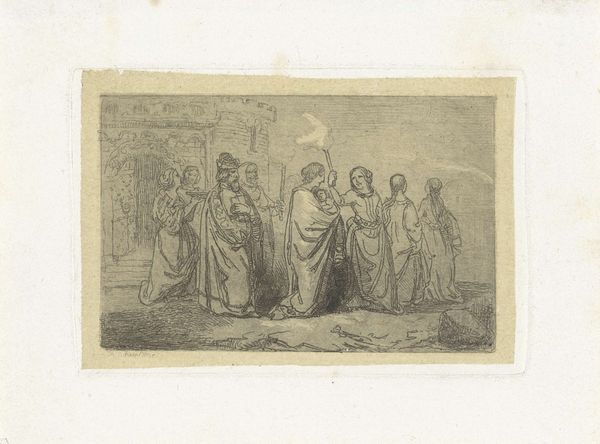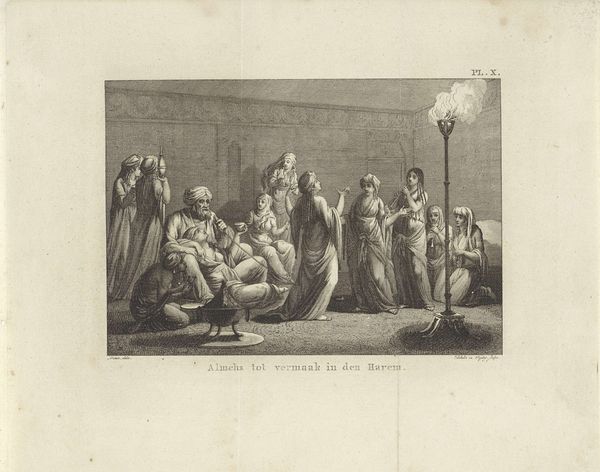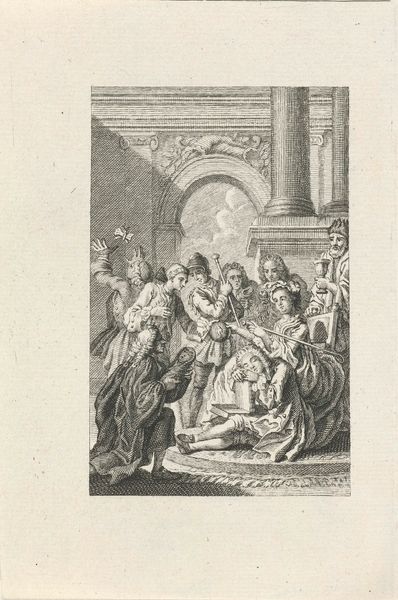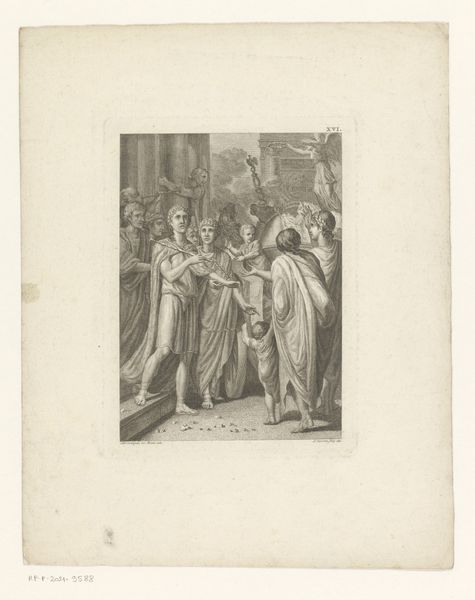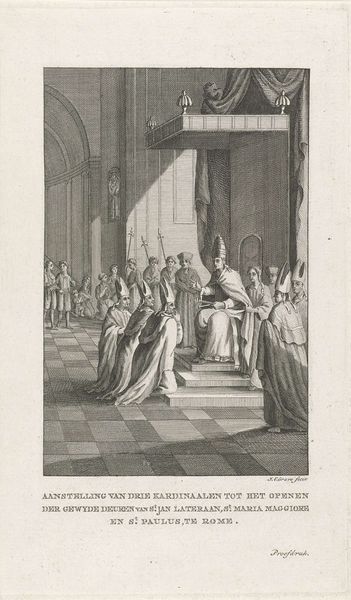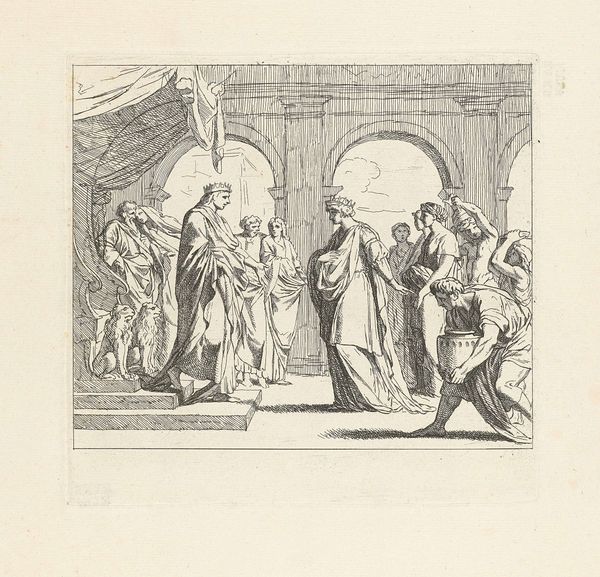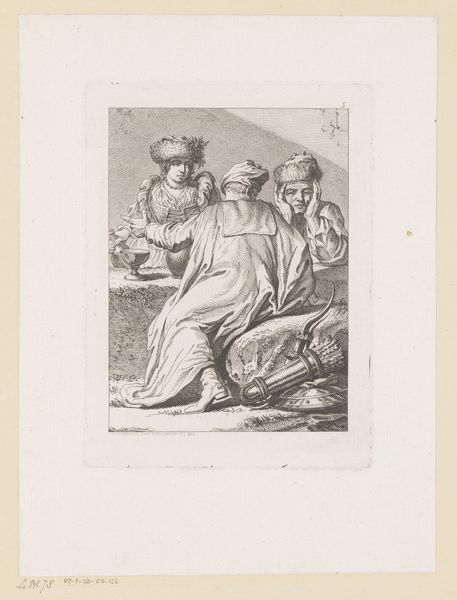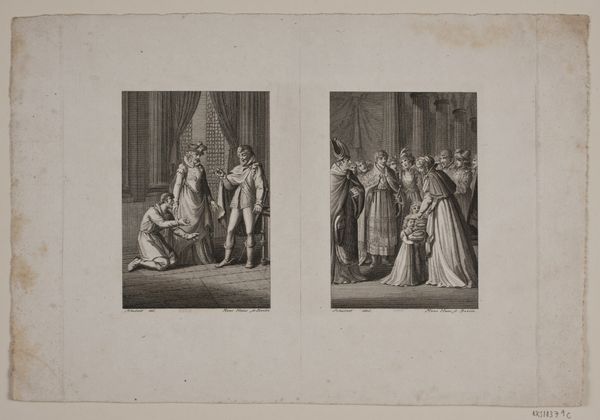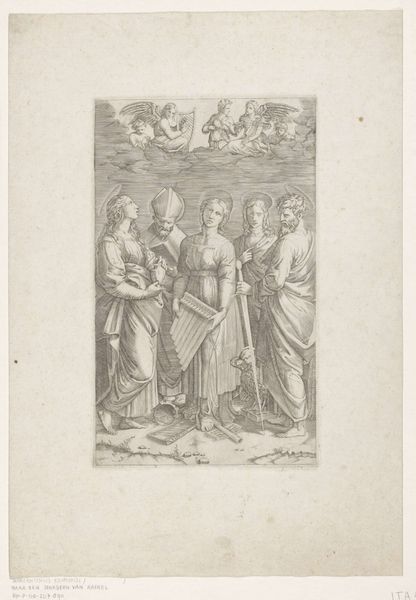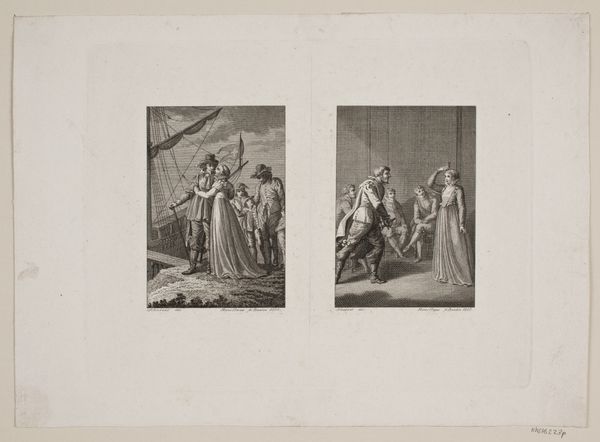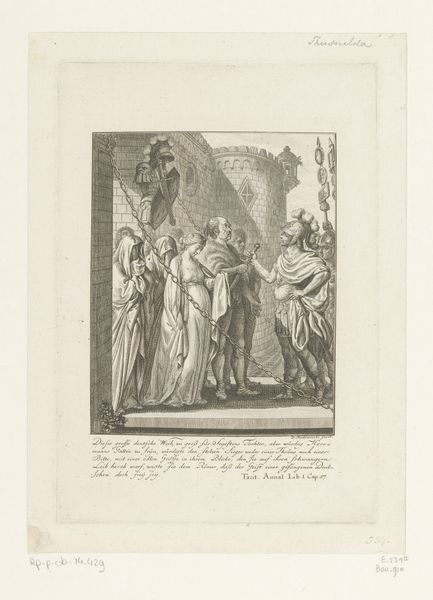
drawing, print, paper, ink, engraving
#
pencil drawn
#
drawing
#
toned paper
#
light pencil work
#
narrative-art
# print
#
pencil sketch
#
sketch book
#
figuration
#
paper
#
personal sketchbook
#
ink
#
pen-ink sketch
#
line
#
sketchbook drawing
#
pencil work
#
history-painting
#
northern-renaissance
#
sketchbook art
#
engraving
Dimensions: height 65 mm, width 96 mm
Copyright: Rijks Museum: Open Domain
Curator: Here we have "Doopstoet", a work by Theodoor Schaepkens created sometime between 1825 and 1883. It’s currently held in the collection of the Rijksmuseum. My initial impression is one of fragility, a scene captured with such delicate pencil work on toned paper. What strikes you about it? Editor: The sketchy quality certainly speaks to the preparatory nature, a kind of study for something larger perhaps. I’m immediately drawn to the architectural details, which imply both craft and labor – and also wealth – that underpin the social structure that enables a baptism like this. Curator: Exactly! The artist seems deeply interested in depicting these very power dynamics at play within the performative rituals. Look at the subjects’ postures and positioning. It almost has a stage-like quality that heightens the power, privilege, and pageantry embedded in the baptism. It’s all quite performative, isn’t it? Editor: Absolutely. But how does Schaepkens, in using primarily pencil and ink, signal wealth? By demonstrating a control and precision that is, on some level, afforded by that social strata? It's intriguing to think of this relatively modest print as a product *and* reflector of very specific material circumstances. Curator: Indeed. Furthermore, the medium invites a level of intimacy with the viewer. By choosing humble materials to address the opulence, Schaepkens poses important questions about access and audience, hinting at the disparity between the church and those it serves. Who benefits, and who is excluded? Editor: The materiality almost downplays any hint of "divine" association with this, replacing pomp and circumstance with just...circumstance. A focus on humanity and how such rituals take a physical and material form in people's lives. Curator: Well, thinking about it, my takeaway from the work is really about interrogating what this procession, or any spectacle of faith, can signify beyond the immediate spiritual implications. Editor: And I see the drawing itself, its very making, as intrinsic to the message about the material circumstances around such a parade.
Comments
No comments
Be the first to comment and join the conversation on the ultimate creative platform.
